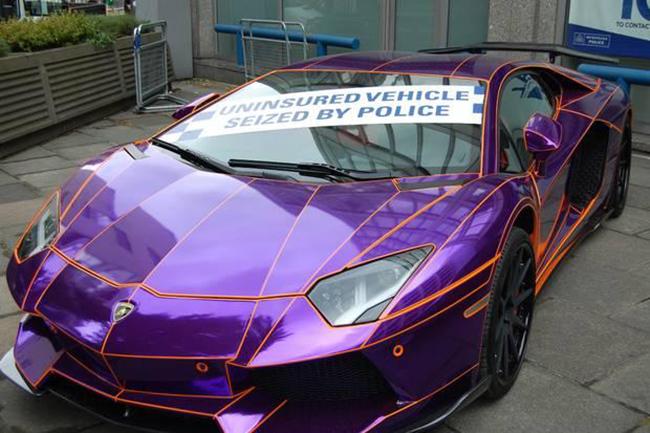
A luxury sports car seized in London for allegedly having no insurance could end up in the crusher, police said Thursday.
The $450,000 Lamborghini Aventador was stopped by police near high-end department store Harrods at the end of last month. Should the owner – believed to be 24-year-old Nasser Al-Thani – fail to produce up-to-date insurance details and refuse to pay any imposed fine, he could see his flashy supercar wrecked by a crusher.
And while such an unthinkable act may bring tears to the eyes of petrolheads around the world, Al-Thani might simply shrug his shoulders, pop down the nearest Lamborghini showroom and buy another one. He is, after all, a member of the Qatari ruling family.
A spokesman for London’s Metropolitan Police told the Evening Standard the Lamborghini, complete with its 6.5-liter V12 engine, isn’t the first upmarket vehicle its seized.
“We’ve had a few Porsches, BMW X5s, and a Ferrari – that one got crushed and in fact the vast majority of them are,” the spokesman said.

The car, with an extraordinary purple and orange paint job that’s rumored to glow in the dark, drew quite a crowd when it was pulled over by police (video below) in London’s wealthy Knightsbridge district last week, with many eager to snap a picture of the 217-mph car as it was loaded onto the back of a truck.
It’s not clear precisely when the car could end up in the crusher, but if it does, we won’t be surprised if a video surfaces on YouTube showing the pricey motor making its way to that great parking lot in the sky. We’ll keep you posted….
[Top image: Evening Standard]


